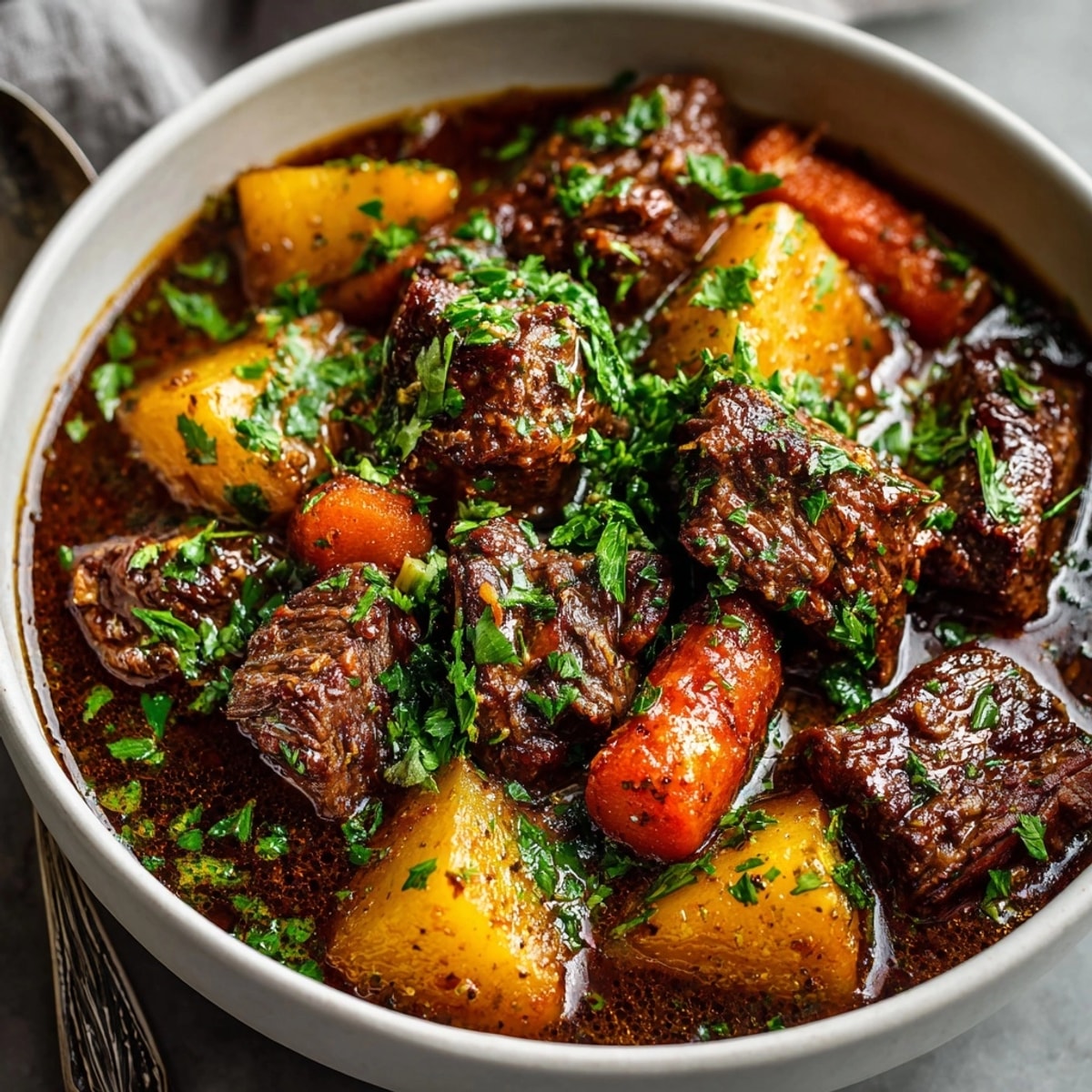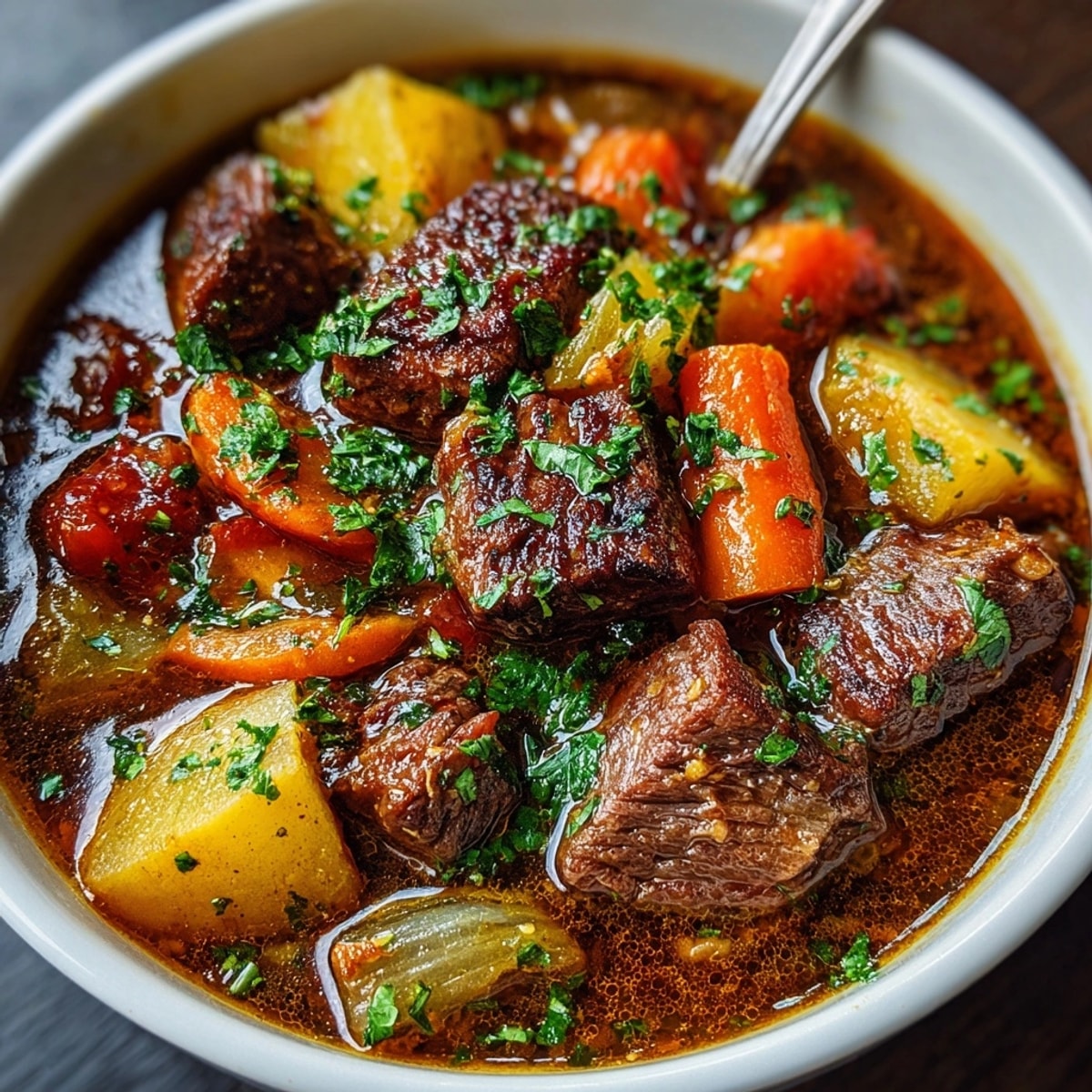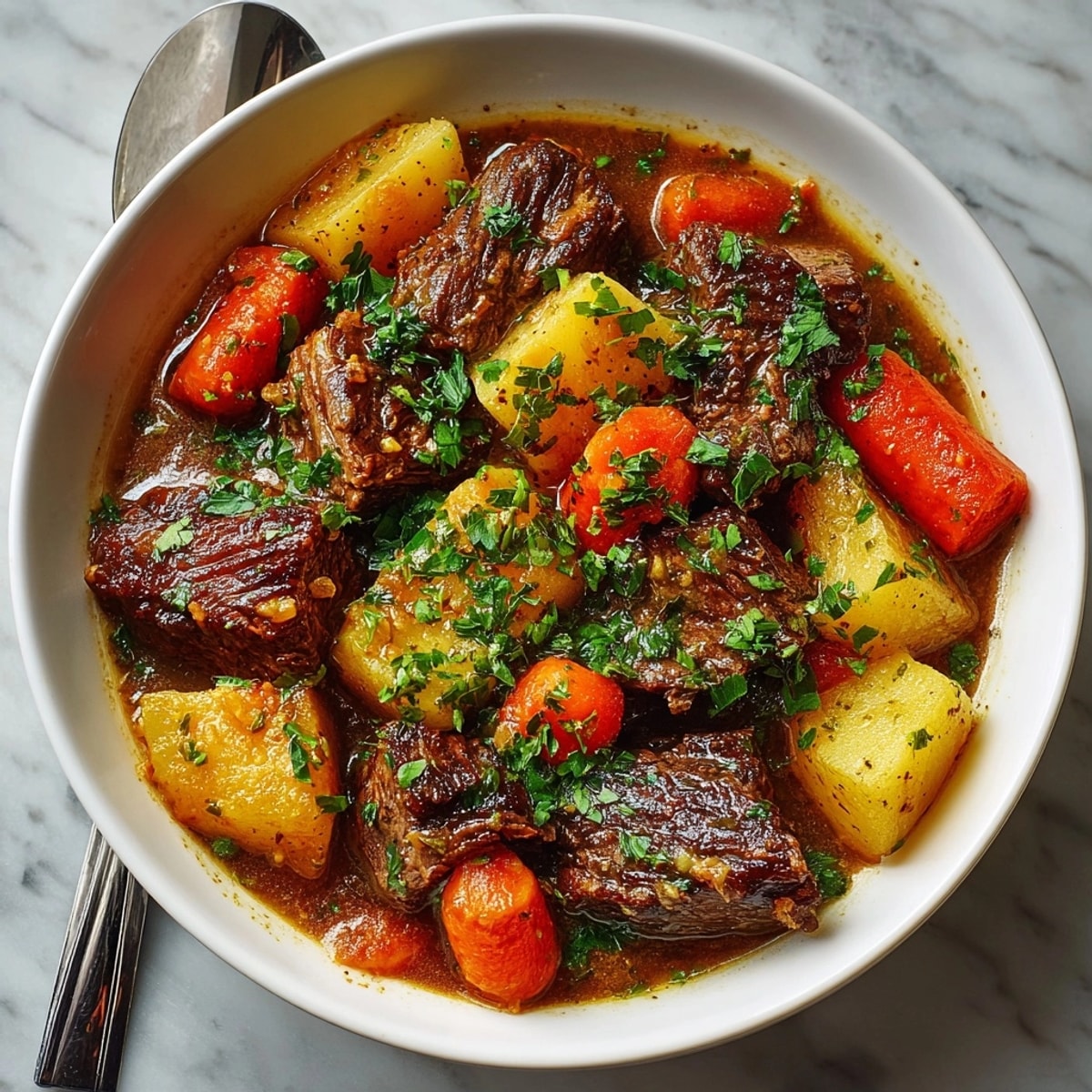 Save It
Save It This beef and root vegetable stew is the kind of hearty meal that sticks to your ribs and fills the house with the kind of aroma that begs everyone to gather around the table. It is deeply savory with fork-tender meat and plenty of earthy vegetables swimming in a rich broth. I started making this to get through those long, chilly evenings when I needed comfort and something delicious to look forward to at dinnertime.
I first made this stew during a snowstorm with what I had left in the crisper. Something about the low and slow simmer brought everyone together and now it is a weekend tradition in our home.
Ingredients
- Beef chuck roast: cut in large chunks. It has beautiful marbling that turns tender and silky after braising. Look for deep red meat with streaks of fat for the best richness and texture.
- Carrots: for sweetness and color. Choose carrots that feel firm and are not dry at the tips for a satisfying bite.
- Parsnips: to add an earthy depth that balances out the stew. Look for ones that are smaller for a sweeter flavor without any tough core.
- Yukon gold potatoes: these give a buttery finish and keep their shape after simmering. Pick potatoes free from green spots or cuts.
- Celery: for herbal notes and softness. Crisp stalks add a gentle background flavor.
- Yellow onion: a foundation for every good stew adds a gentle sweetness. Select onions with dry skins and avoid any soft spots.
- Garlic: for savoriness and warmth look for plump heads heavy for their size.
- Beef stock: forms the backbone of the stew. Use a good boxed or homemade stock with minimal additives for the best taste.
- Tomato paste: brings richness and deepens the flavor. Look for double-concentrated tube paste for bold color and taste.
- Thyme and bay leaf: infuse a woodsy aroma that pairs perfectly with beef. Fresh or dried both work.
- Olive oil: for searing and building flavor. Choose a medium-bodied oil for basic sautéing.
- Salt and black pepper: to round out all the flavors and bring everything together. Use flaky salt for finishing if you want added crunch.
Instructions
- Brown the Beef:
- Heat olive oil in a heavy-bottomed pot over medium-high heat. Add beef chunks in batches not crowding the pan and sear them on all sides until deeply browned. This creates the base of flavor for the stew.
- Build the Flavor Base:
- Add chopped onions with a pinch of salt and cook over medium heat until soft and golden around the edges about ten minutes. Stir in minced garlic and tomato paste cooking until the paste deepens in color and the garlic is fragrant which should take about two minutes.
- Deglaze and Simmer:
- Pour in a splash of beef stock scraping up all the browned bits from the bottom of the pot. Add the seared beef back in with any accumulated juices. Sprinkle in thyme and tuck in a bay leaf for herbal warmth.
- Add Your Vegetables:
- Layer in potato parsnip carrot and celery pieces stirring gently to nestle them around the beef. Pour in the rest of the beef stock until just covered. Bring everything to a low simmer.
- Slow Cook Until Tender:
- Cover the pot with a lid and reduce the heat to low. Let the stew cook gently for two hours or until the beef is fall-apart tender and the vegetables are soft but not mushy. Stir occasionally to keep anything from sticking on the bottom.
- Adjust and Serve:
- Taste the broth and season with extra salt or black pepper as needed. Remove the bay leaf before serving. Serve piping hot with crusty bread or over creamy mashed potatoes for the ultimate comfort meal.
 Save It
Save It The thyme in this recipe always brings me back to my grandmother's kitchen where she would tie little bunches with string. Every time I stir this pot the scent whisks me to those slow afternoons by her side learning the secrets of a perfect stew.
Storage Tips
Once the stew has cooled transfer it to airtight containers and store in the refrigerator for up to four days. I find the flavors actually get better on day two. For longer storage portion into freezer-safe containers and freeze for up to three months. To reheat thaw overnight in the fridge then gently warm on the stove adding a splash of broth to loosen if needed.
Ingredient Substitutions
If you cannot find parsnips try using rutabaga or even a couple of sweet potatoes for some extra sweetness. Beef stew meat can stand in if chuck roast is not available just increase cooking time slightly. For vegetarians hearty mushrooms and extra potatoes with vegetable stock make a cozy version that still hits the spot.
Serving Suggestions
A generous ladle of this stew goes perfectly over buttered egg noodles or creamy mashed potatoes. Freshly chopped herbs like parsley or chives bring brightness to each bowl. For a simple complete meal add a crisp green salad on the side and some crusty bread to sop up every drop of broth.
Cultural and Historical Context
Beef and root vegetable stew has a place in many cuisines from French pot-au-feu to Irish stew. These dishes grew from the need to make simple ingredients stretch and are now the ultimate examples of comfort food that welcome everyone to the table. Slow braising is an age-old tradition that turns humble cuts into something special.
Seasonal Adaptations
Try swapping out root vegetables throughout the year. In autumn add squash for a sweet touch. In winter bulk it up with turnip or celery root. In early spring toss in tender green peas for a fresh burst right before serving.
 Save It
Save It Each spoonful of this stew is pure comfort and perfect for sharing. The leftovers are even better the next day.
Recipe FAQs
- → What cuts of beef work best?
Chuck roast or beef brisket are preferred for their tenderness after slow simmering and rich flavor.
- → Which root vegetables can I use?
Common choices include carrots, parsnips, turnips, rutabagas, and potatoes, but feel free to mix and match.
- → How long should I simmer the stew?
For best results, simmer for at least 2 hours to allow beef and vegetables to fully tenderize.
- → Can I prepare this dish in advance?
Yes, it tastes even better the next day as flavors meld and intensify overnight in the refrigerator.
- → What are some serving suggestions?
Serve hot with crusty bread, over mashed potatoes, or alongside a simple green salad.